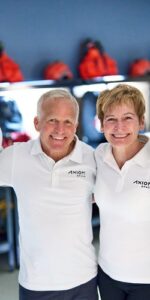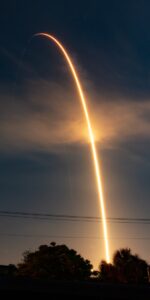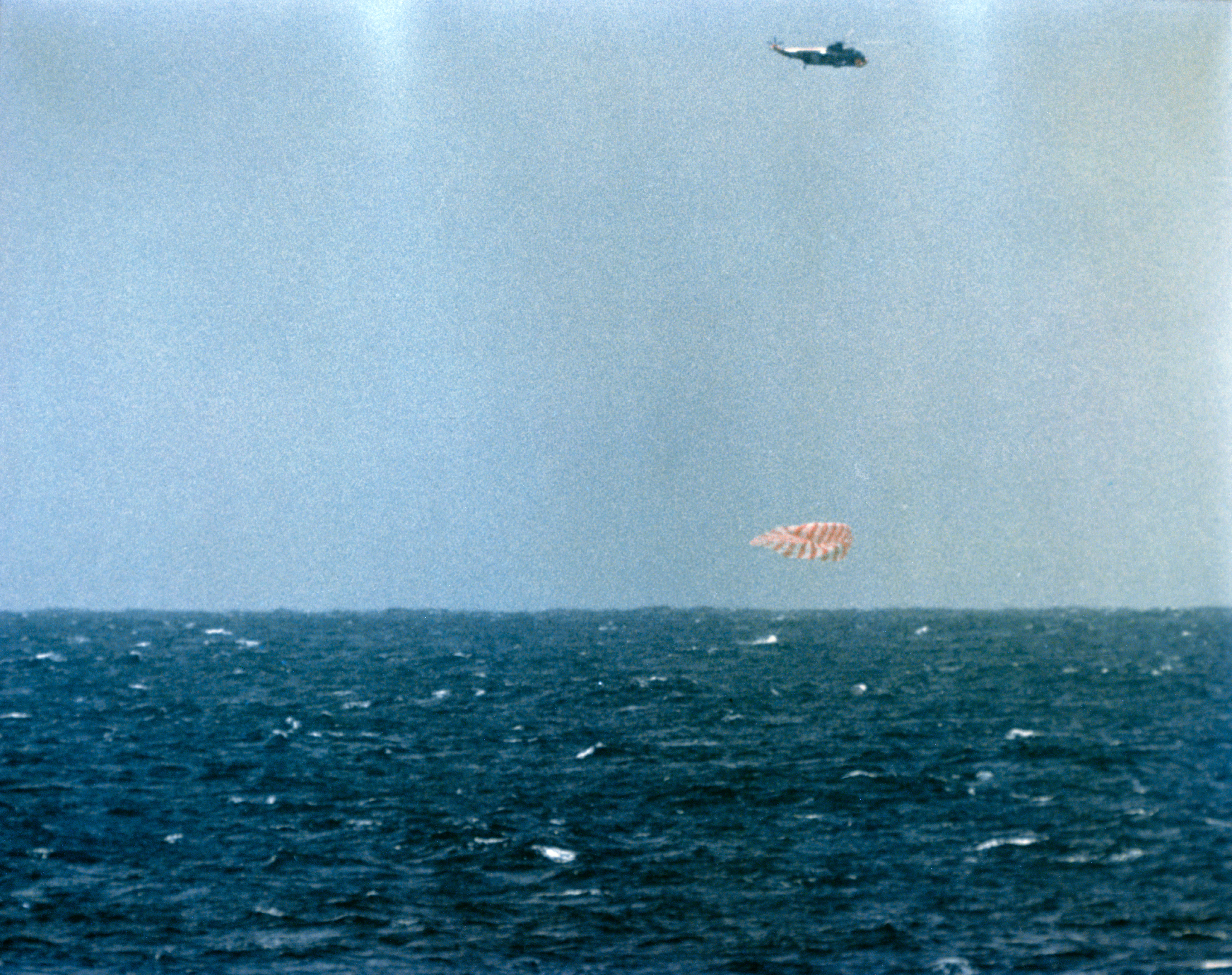
Early on 14 May 1963, a hotshot pilot lay on his back in a tiny capsule, atop a converted ballistic missile, and steeled himself to be blasted into space. On Project Mercury’s sixth and final manned mission, Air Force Major Gordon Cooper would spend 34 hours aloft, circle the globe 22 times and establish NASA’s first real baseline of long-duration spaceflight experience as the space agency and the nation prepared to land a man on the Moon before the end of the decade.
To be fair, the flight—formally designated “Mercury-Atlas-9” (MA-9) but nicknamed “Faith 7” by Cooper—would last a quarter as long as the Soviet Union’s four-day Vostok 3 mission a year earlier, but for NASA it would mark an important step forward. Yet there were many senior managers who doubted that Cooper was the right man for the job.
Two days earlier, he had buzzed the administration building at Cape Canaveral in his F-106 Delta Dart jet, sparking a flurry of frantic emergency calls and maddening Project Mercury Operations Director Walt Williams to the extent that he almost grounded Cooper in favor of his backup, Al Shepard. Thus, Cooper had much ground to make up to restore managers’ “faith” in his abilities.
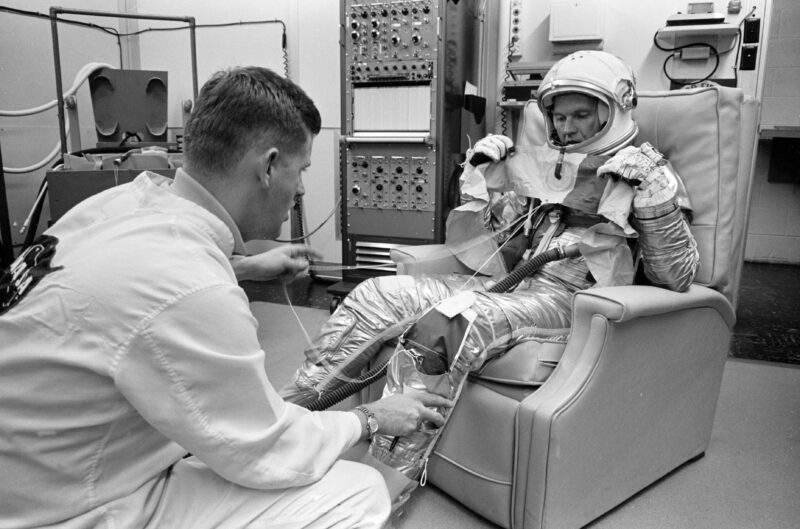
On 14 May, Cooper breakfasted with Shepard. Only hours earlier, Shepard convinced himself that the mission was his for the taking.
He could not believe that Cooper could possibly be so rash as to buzz the very building in which his bosses were holding a meeting and was frustrated at this lost opportunity to fly himself, to the extent that he planned a mean-spirited joke. Press spokesman John “Shorty” Powers had arrived early that morning with two cameramen, who would shoot behind-the-scenes footage of Cooper as he prepared for launch.
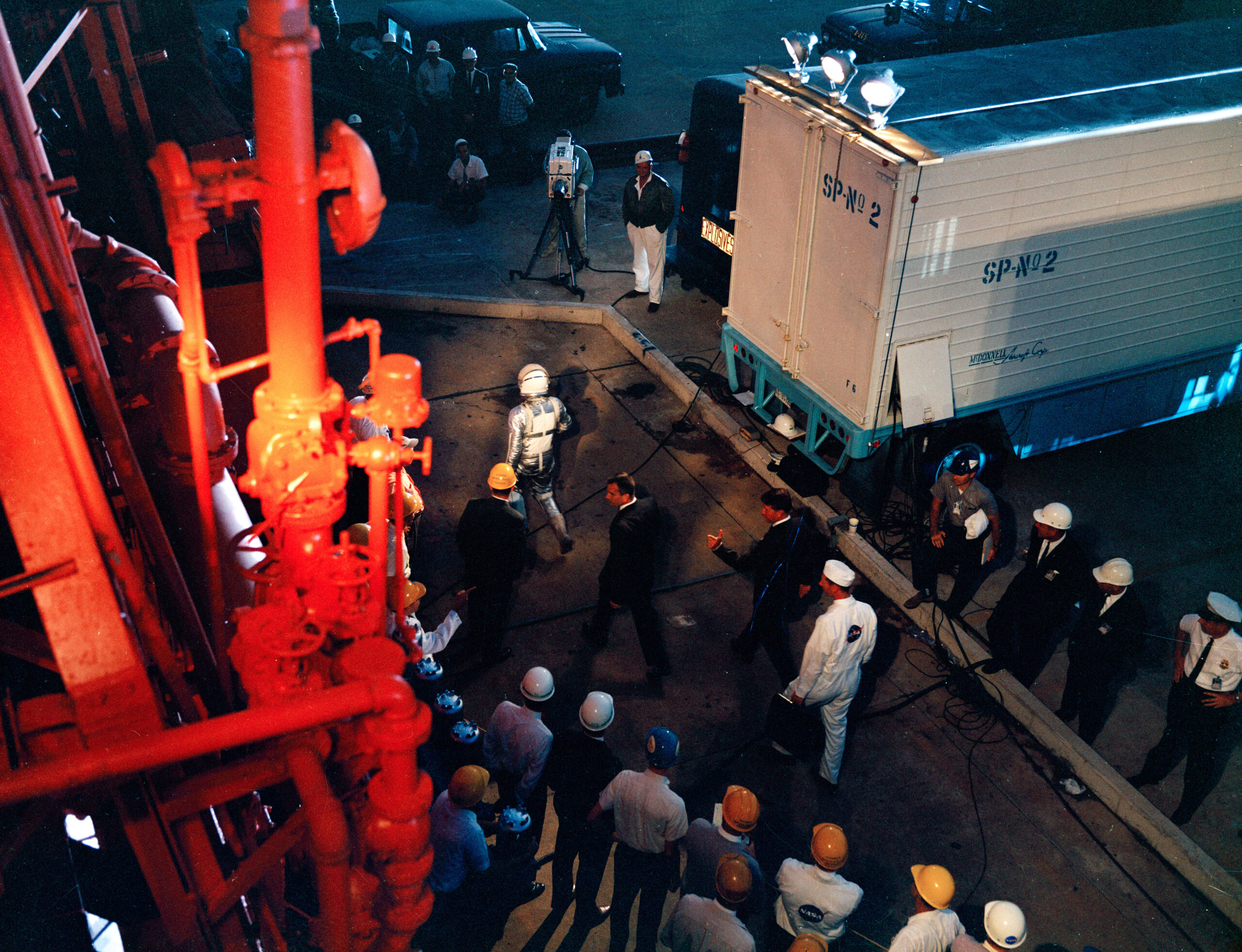
To their shock, they discovered that none of the overhead lights were working, nor were the electrical sockets. Someone had cut the wires, removed every light bulb, inserted thick tape into the sockets and replaced the bulbs.
No one pointed any fingers, but Powers recognized Shepard’s grin. It was typical of him, said Powers, “when he has a mouse under his hat”.
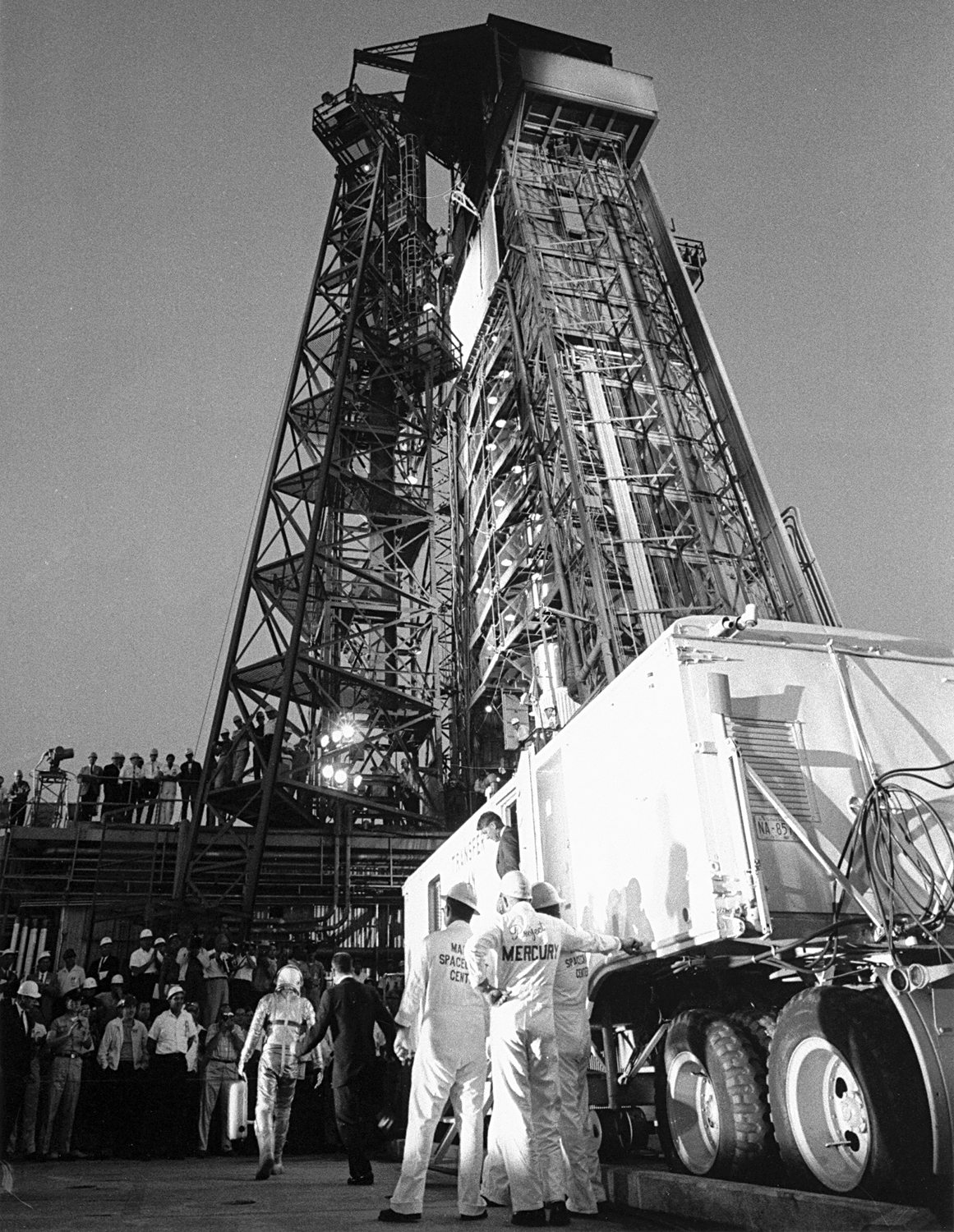
Another gift from Shepard awaited Cooper when he boarded Faith 7 at 6:36 a.m. EDT: a small suction-cup pump on the seat, labeled “Remove Before Flight”, in honor of the new urine-collection device. (Cooper would become the first Mercury astronaut to urinate in a manner other than “in his suit.”)
At this stage, the only indication of doubt that the mission would fly came from weatherman Ernest Amman, although the trouble increased when a radar at the secondary control center in Bermuda malfunctioned. Then, at 8 a.m. EDT, with an hour remaining in the countdown, a diesel engine stubbornly refused to work.
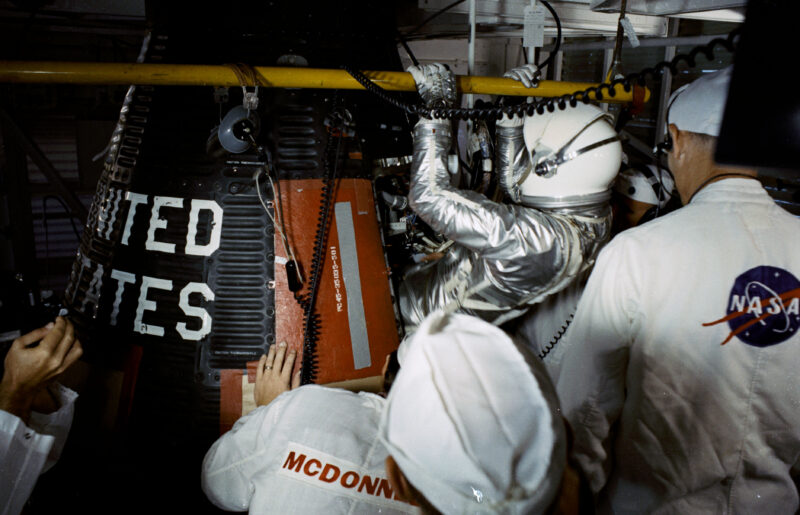
It was supposed to move the gantry away from the Atlas rocket, and two hours were spent trying to fix a fouled fuel injector pump. The countdown resumed around midday and the gantry was successfully retracted, but a computer converter failed at the Bermuda station and the 14 May launch attempt had to be scrubbed.
Despite six hours on his back, Cooper was upbeat and managed to summon a wry grin when he was finally extracted from Faith 7. “I was just getting to the real fun part,” he said.
“It was a very real simulation,” Cooper added. As the astronaut spent the afternoon fishing, technicians readied the Atlas and the spacecraft for another attempt, early on the 15th.
Arriving at the capsule for the second time, he saluted McDonnell pad leader Guenter Wendt with mock formality, reporting in as “Private Fifth Class Cooper”, to which the German pad “fuehrer” responded in kind. The roots of the joke came two years earlier, when Cooper stood in for Shepard in a practice countdown session.
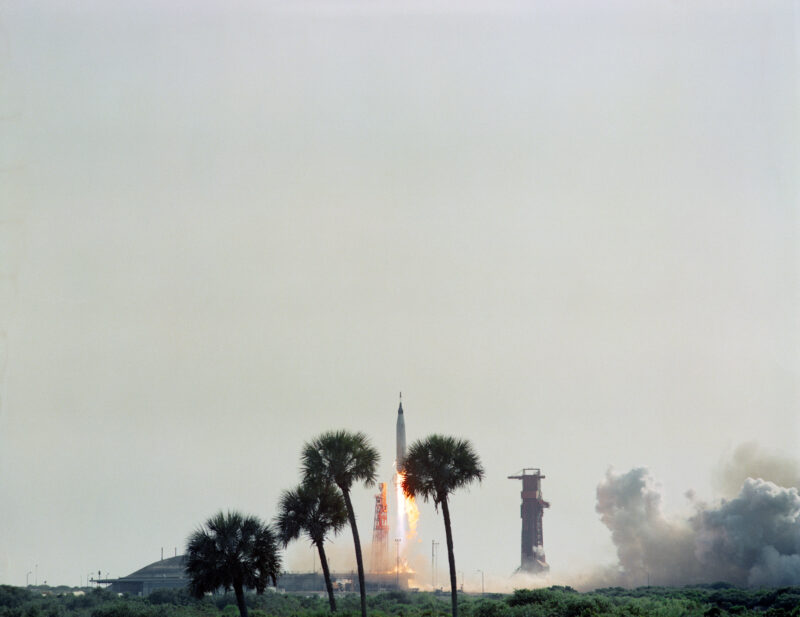
His mock terror—begging Wendt not to make him climb aboard the primed rocket—had so annoyed NASA managers that a couple even threatened to “bust him to Private Fifth Class”. Ironically, Cooper and Wendt liked the idea and ran with it.
Despite a problem with the Atlas’ guidance equipment, which forced a brief hold, the countdown marched crisply on this second attempt; so crisply, in fact, that Cooper fell asleep. It took astronaut Wally Schirra several efforts to bellow his name over the communications link to awaken him.
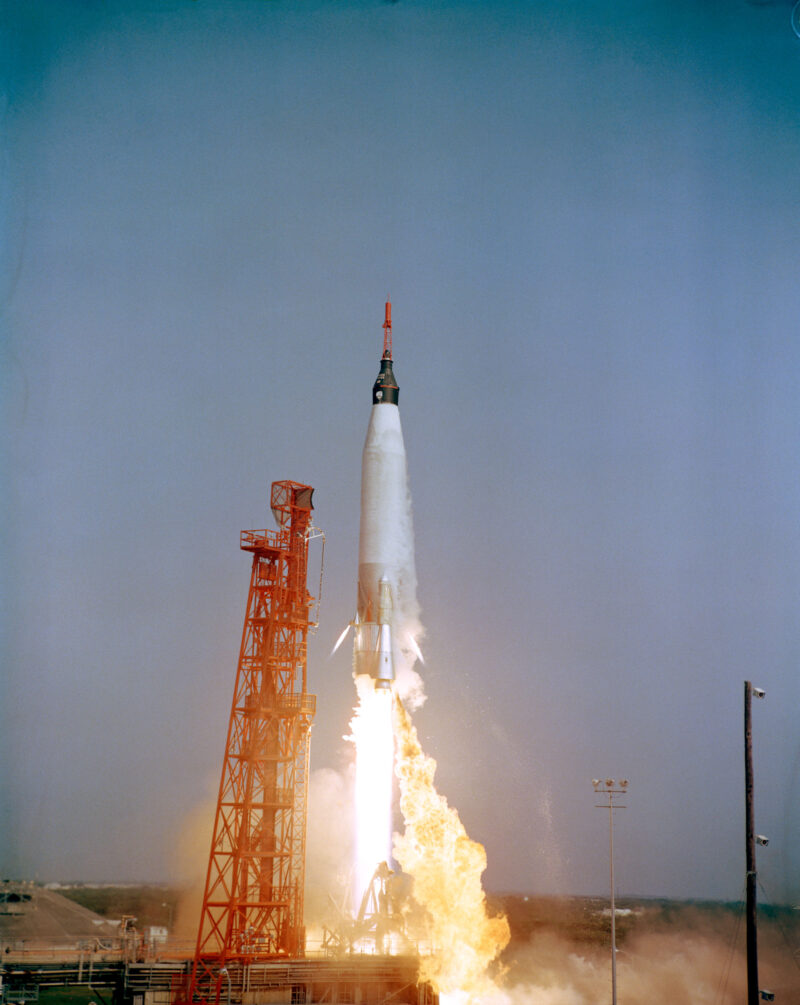
Then, with just 19 seconds to go, another halt was called to allow launch controllers to ascertain that the rocket’s systems had properly assumed their automatic sequence. Shortly after 8 a.m. on 15 May 1963, America’s sixth man in space thundered off the pad in what Cooper would later describe as “a smooth, but definite push”.
Within minutes, Faith 7 was inserted into an orbit so good that its heading was 0.0002 degrees from perfect and its velocity “right on the money” at 17,550 mph (28,240 km/h). “Smack-dab in the middle of the plot,” an admiring Schirra told him.

So rapid was Cooper’s passage across the Atlantic Ocean that he expressed astonishment when called by the tracking stations in the Canaries and Kano in Nigeria. The first day of the mission went well—at one stage, the astronaut’s heart rate surged during a sleep period, suggesting that he was experiencing an exciting dream—and he moved swiftly through his multitude of tasks.
Earth observations, photography, collection of urine samples, and monitoring his ship’s health occupied his time, although he did grab a few moments to chew some brownies, fruit cake and bacon chunks. His use of the cabin’s oxygen supply was so efficient that Shepard jokingly asked him to “stop holding your breath.”
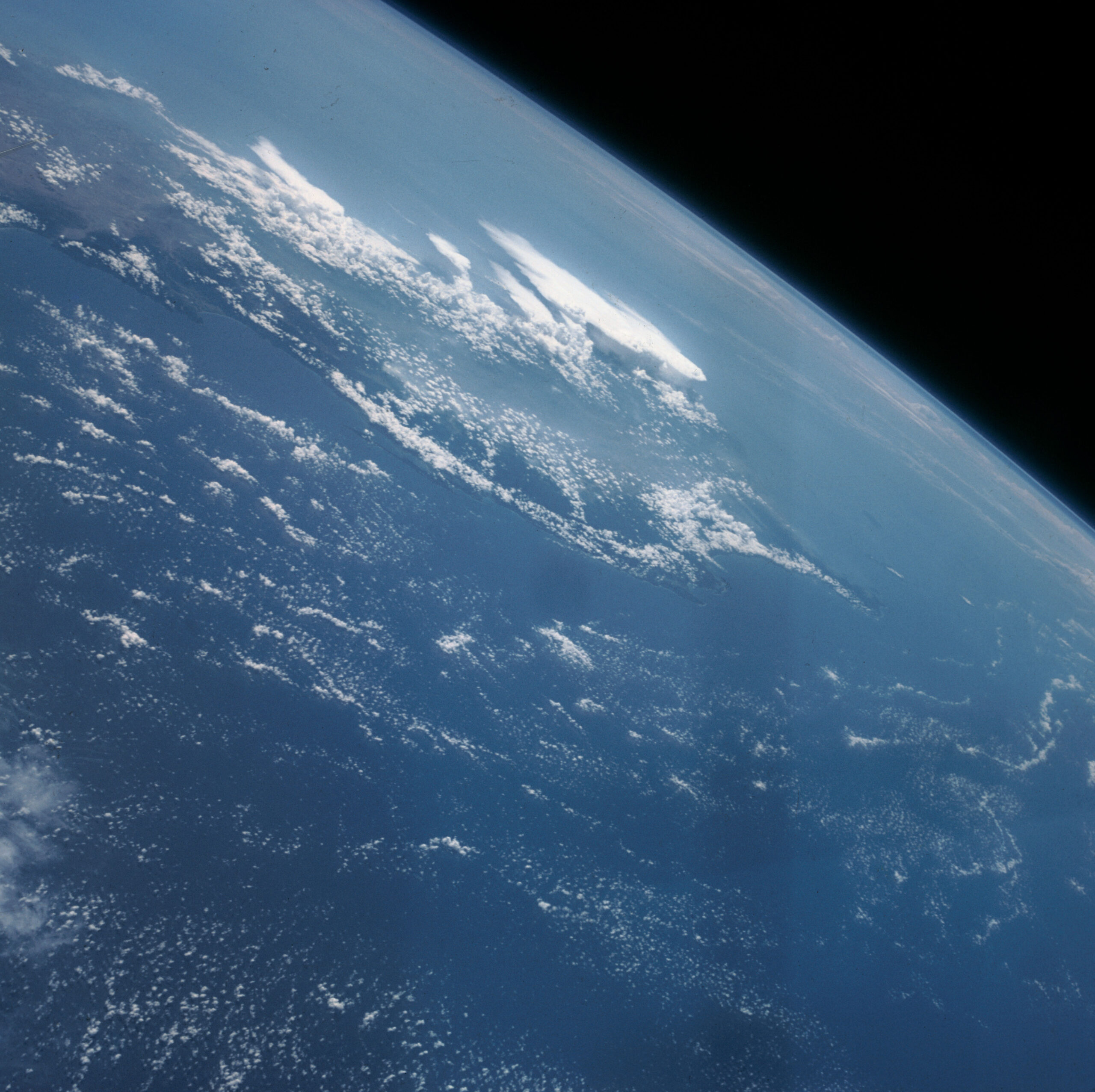
The astronaut responded that—as the only non-smoker amongst the Mercury Seven—his lungs were in better shape than those of his comrades. If his oxygen usage was minimal, so too was his fuel, to such an extent that controllers nicknamed him “The Miser.”
One of Cooper’s experiments was to deploy a six-inch (15-centimeter) sphere, instrumented with xenon strobe lights, part of efforts to track a flashing beacon in space. Three hours after launch, the astronaut clicked a squib switch and felt the experiment separate from Faith 7, but he was only able to see it at orbital sunset, pulsing in the darkness.
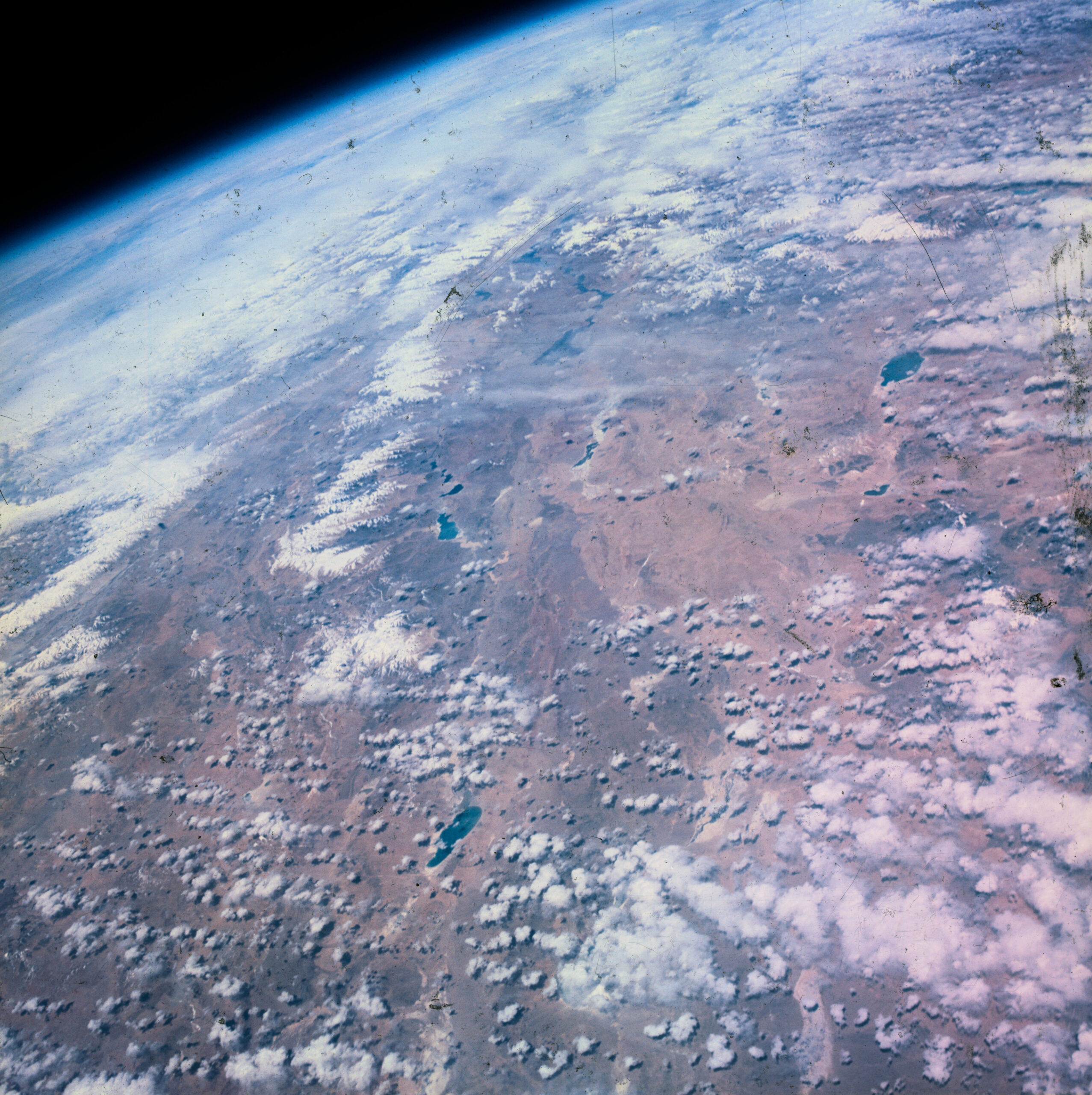
Another experiment involved the release of a Mylar balloon, painted fluorescent orange. Nine hours into the mission, Cooper set cameras, attitude, and switches to deploy the balloon, but it refused to move.
Another attempt was also fruitless. The intent was for the balloon to inflate with nitrogen and extend on a hundred-foot-long (30-meter) tether, after which a strain gauge would measure differences in “pull” at Faith 7’s apogee and perigee. But the cause of the balloon’s failure was never ascertained.
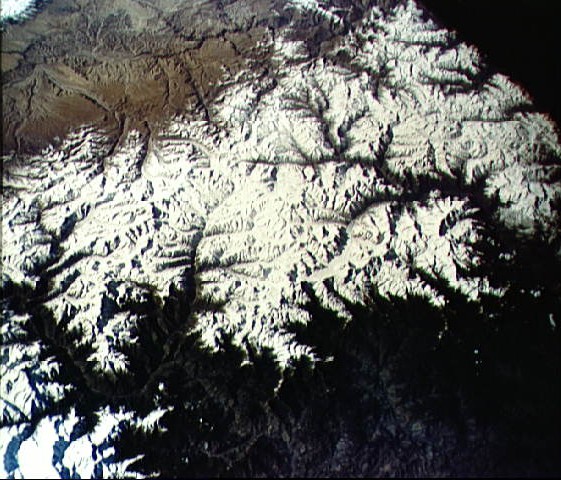
Evaluating an astronaut’s ability to make observations from space achieved more success when Cooper spotted a three-million-candlepower xenon light at Bloemfontein in South Africa. He also made notes as he flew over cities, large oil refineries, roads, rivers, and small villages and even saw smoke twirling from the chimneys of Himalayan houses.
Sleeping in space was virtually impossible, so spectacular was the view. As Cooper passed over South America, then Africa, northern India and into Tibet, the photographic opportunities were priceless.
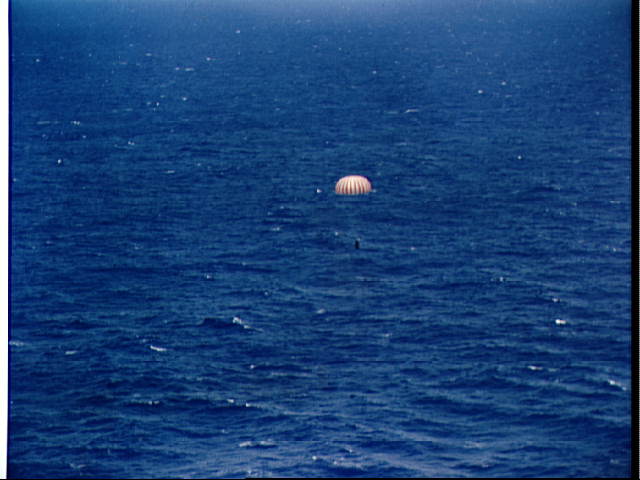
Using the direction of chimney smoke from the Himalayan houses, he was even able to make a few rudimentary estimates about his velocity and the ground winds. Despite the difficulty, he pulled back Faith 7’s window shades around 13 hours after launch to catch some sleep.
He dozed intermittently but found himself having to anchor his thumbs into his helmet restraint strap to keep his arms from floating freely. Every so often, he would lift the shade to take photographs or make status reports or curse quietly to himself when his body-heat exchanger crept too high or too low.
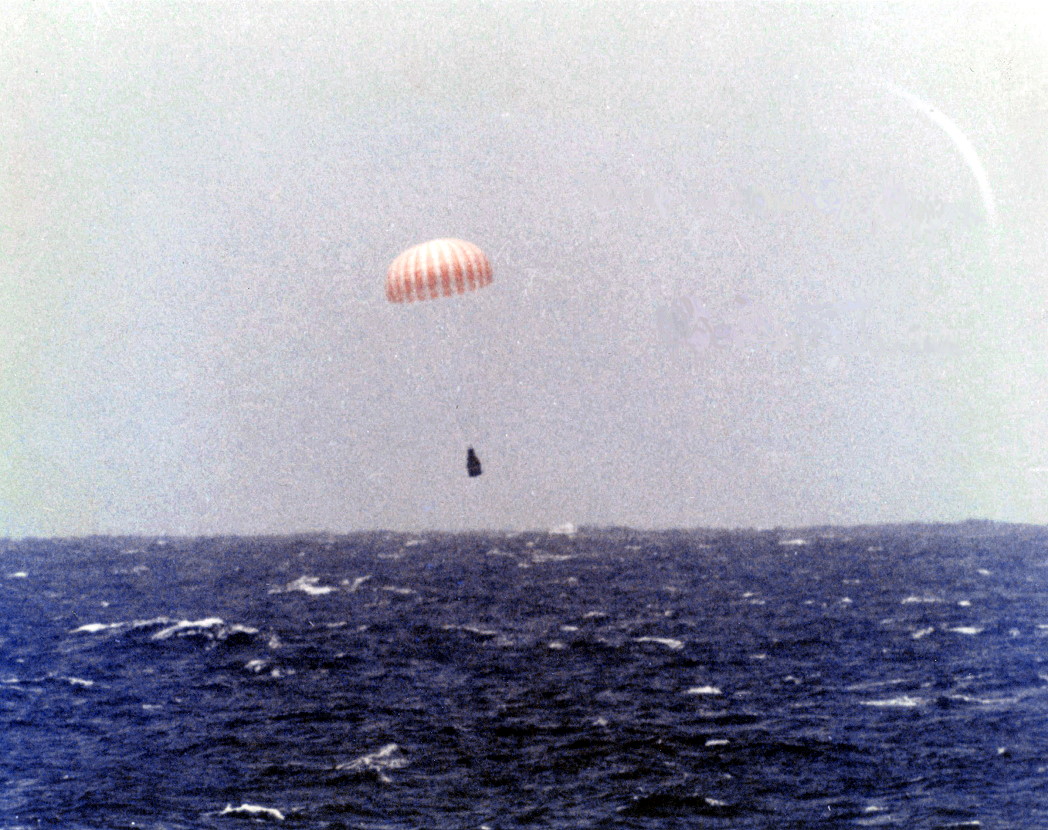
Apart from a few nagging glitches, everything seemed to be going well. Cooper’s oxygen supply was plentiful and his fuel gauges for both automatic and manual tanks looked good. During a brief spell of quiet time, he paused for a short prayer. He thanked God for the privileged opportunity to fly the mission, for being in space, and for seeing such wondrous sights. That prayer marked the beginning of Faith 7’s troubles.
Early on his 19th orbit, around 30 hours after launch, he was over the western Pacific Ocean and out of radio contact with the ground, when his attention was arrested by the glow of one of his instrument panel lights. It was the “0.05 G” indicator and should normally have illuminated after retrofire, as Faith 7 commenced its descent from orbit. Moreover, it should have been quickly followed by the autopilot placing the capsule into a slow roll.
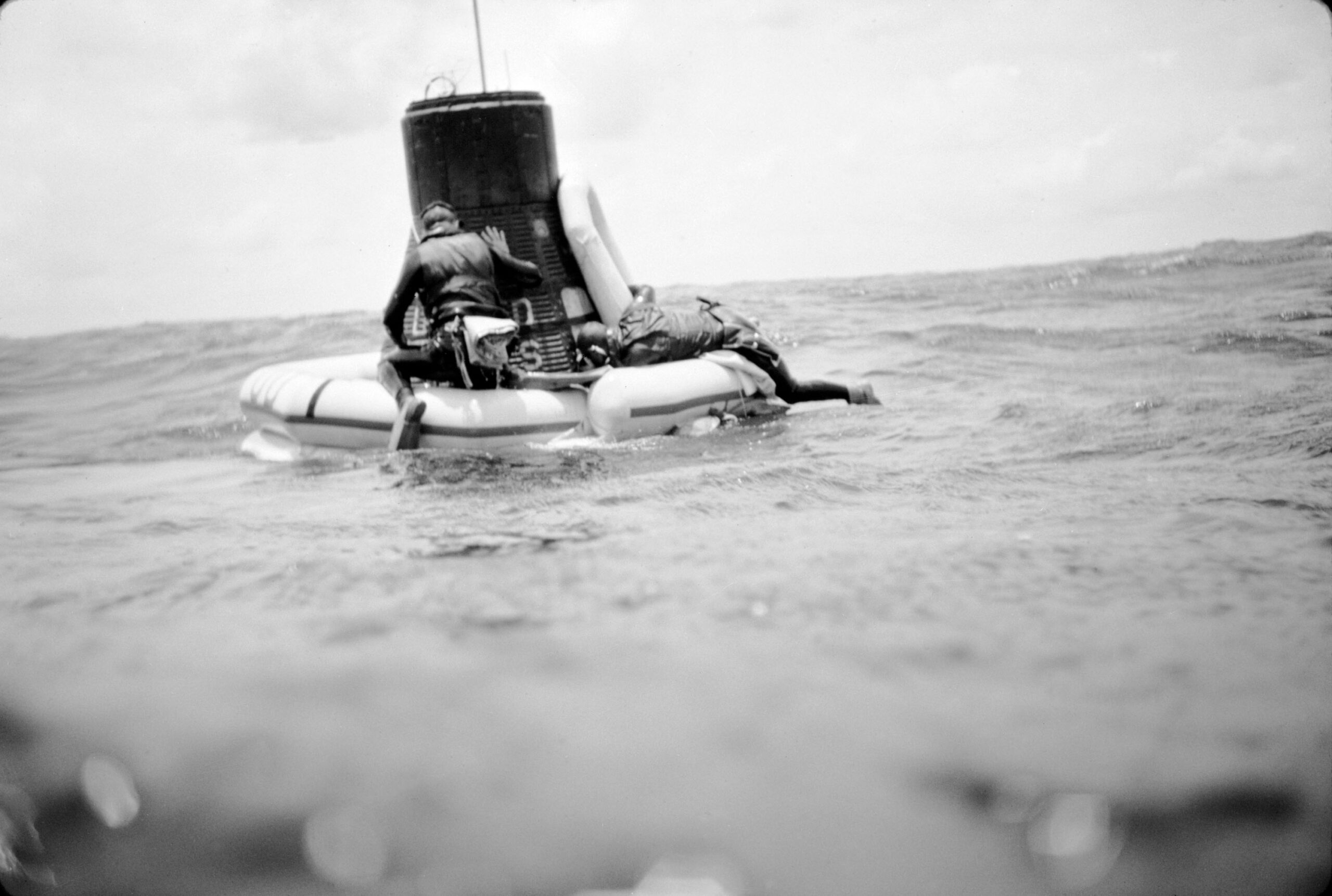
Had Cooper inadvertently “slipped” out of orbit?
That suspicion was quickly refuted by orbital data from the ground, which suggested either that the indicator was at fault or that the autopilot’s re-entry circuitry had tripped out of its normal sequence. An orbit later, Cooper was advised to switch to autopilot and Faith 7 commenced a slow roll.
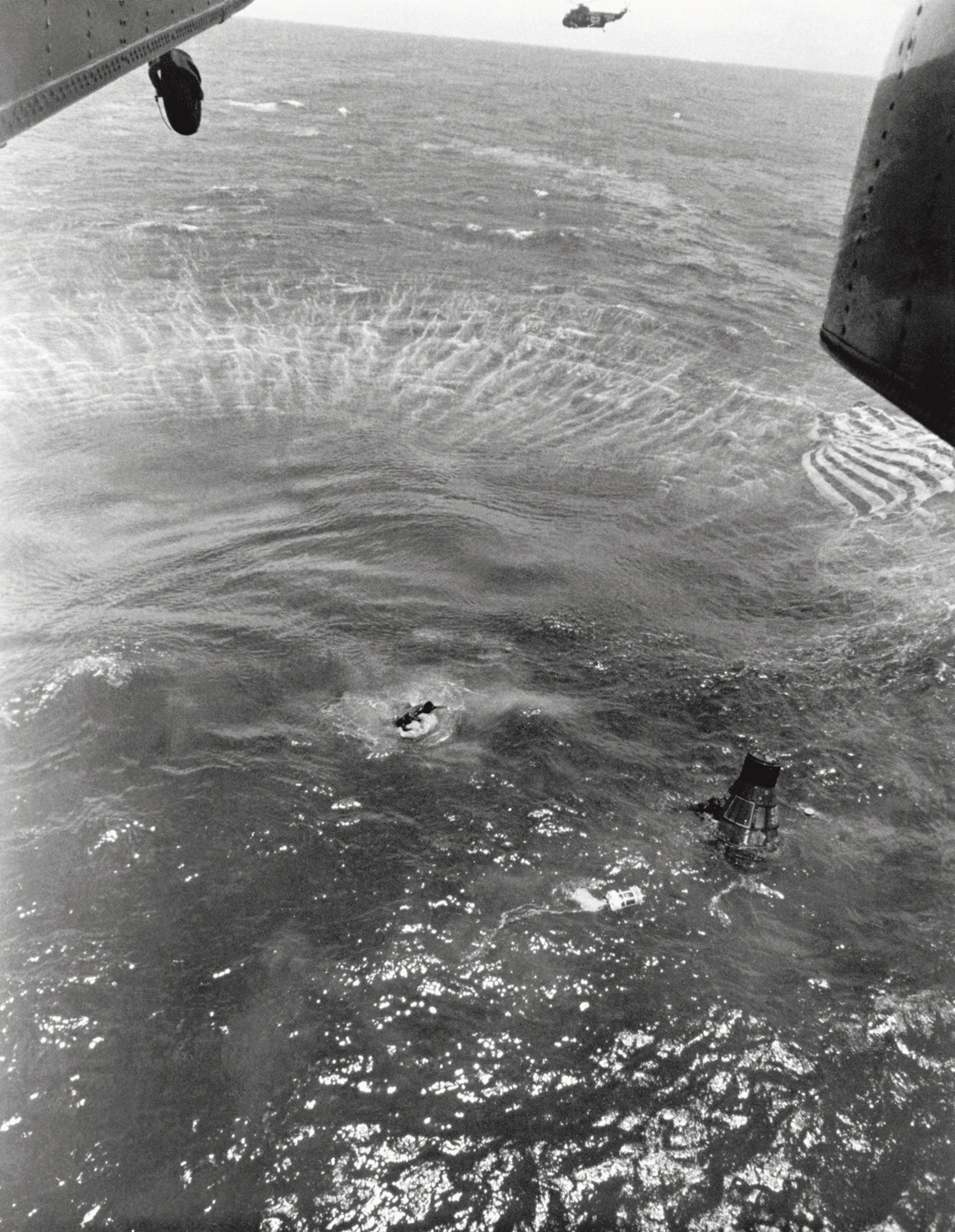
This presented its own issues. For proper flight, the autopilot had to perform other functions before retrofire, and, since each function was sequentially linked, Mission Control knew that several earlier steps had not been executed. And that meant that Cooper might be forced to control those steps by hand, entirely manually.
Worse was to come. On his 20th orbit, Cooper lost all attitude readings and, one revolution later, one of Faith 7’s three power inverters went dead. He tried to switch to a second inverter, but it did not respond. The third was needed to run cooling equipment during re-entry, so the astronaut was left with an autopilot devoid of electrical power.
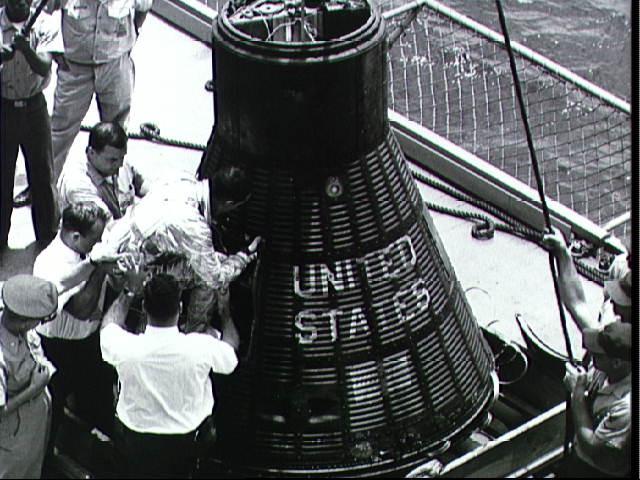
On the ground, the options centered upon bringing Cooper home on batteries alone. The astronaut could not rely on his gyroscope or clock to properly position Faith 7 for re-entry, since both depended on electrical power, and he watched with dismay as carbon dioxide levels began to rise both in the cabin and within his space suit.
In true Right Stuff fashion, his comment over the radio to fellow astronaut Scott Carpenter was nonchalant. “Things,” he drawled, “are beginning to stack up a little!”
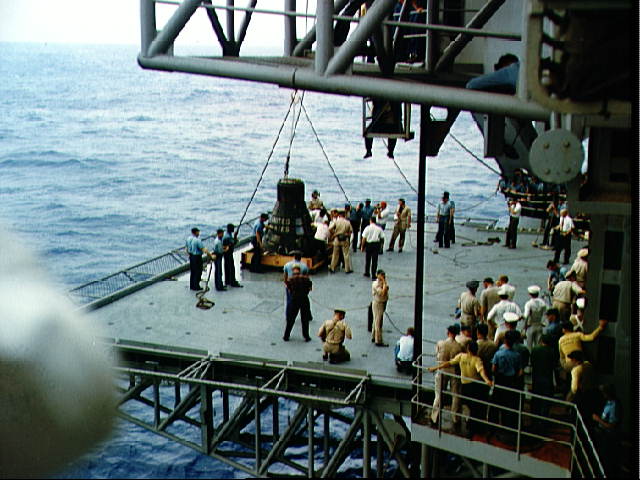
At length, on his 22nd orbit, Cooper made his way smoothly through the pre-retrofire checklist, steadying Faith 7 with his hand controller and lining up a horizontal mark on his window with Earth’s horizon; this dipped the capsule’s nose to the desired 34-degree retrofire angle. Next, he lined up a vertical mark with pre-determined stars to acquire his correct heading and astronaut John Glenn counted him down to retrofire.
Cooper hit the button once—receiving no light signals, due to his electrical problems—and verified that he could feel the punch of the three small retrorocket engines igniting behind him. During the descent from orbit, he periodically damped out unwanted motions with his hand controller and manually deployed both his drogue and main parachutes.
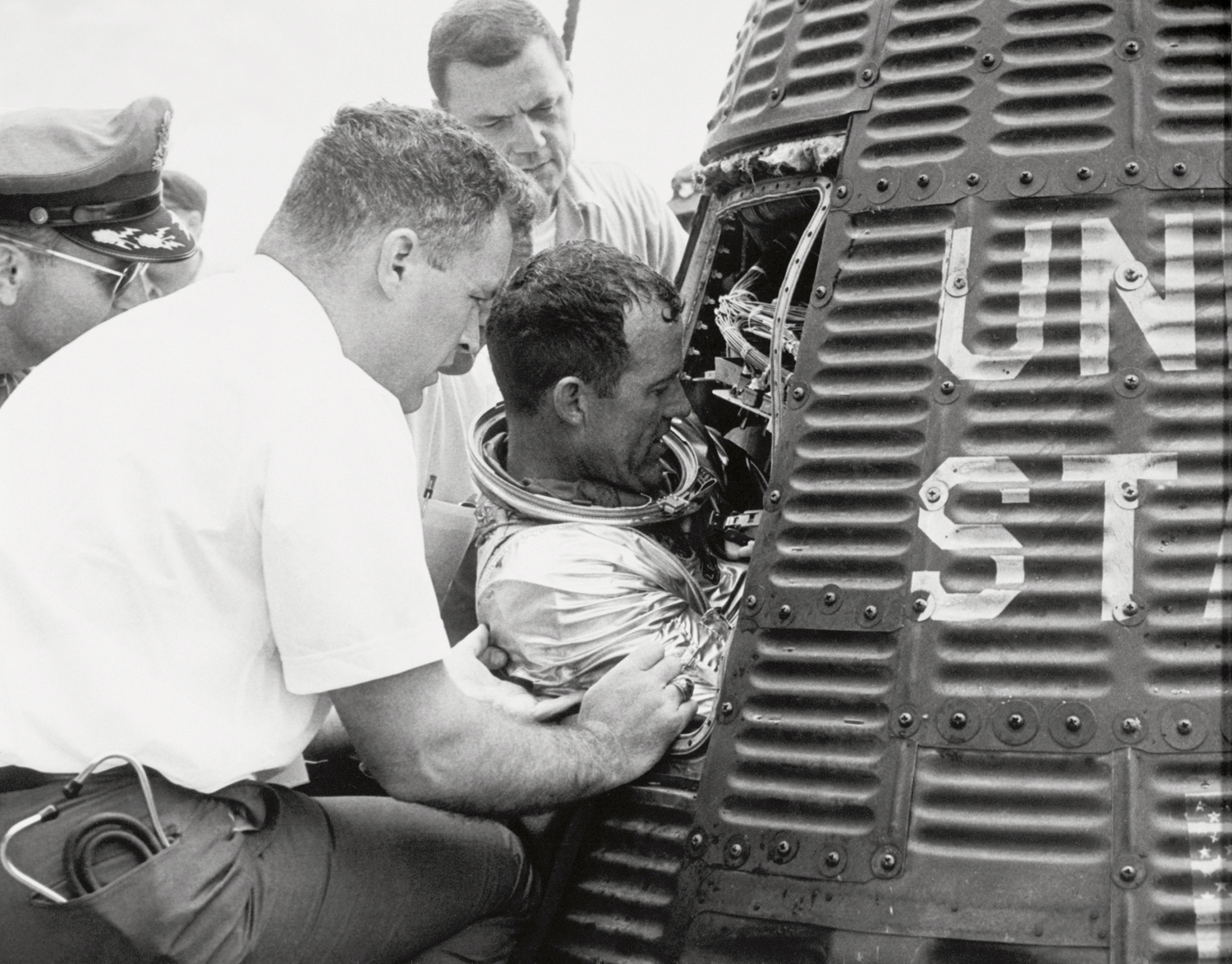
Faith 7 hit the waters of the Pacific Ocean, about 80 miles (130 kilometers) southeast of Midway Island, within sight of the recovery ship USS Kearsarge. The capsule floundered for a few moments, then righted itself.
Cooper’s 34-hour mission had concluded just as each of the Mercury Seven would have wanted: with a pilot in full control of his craft. He had spent more time in space than all of the other members of the “Original Seven” put together.
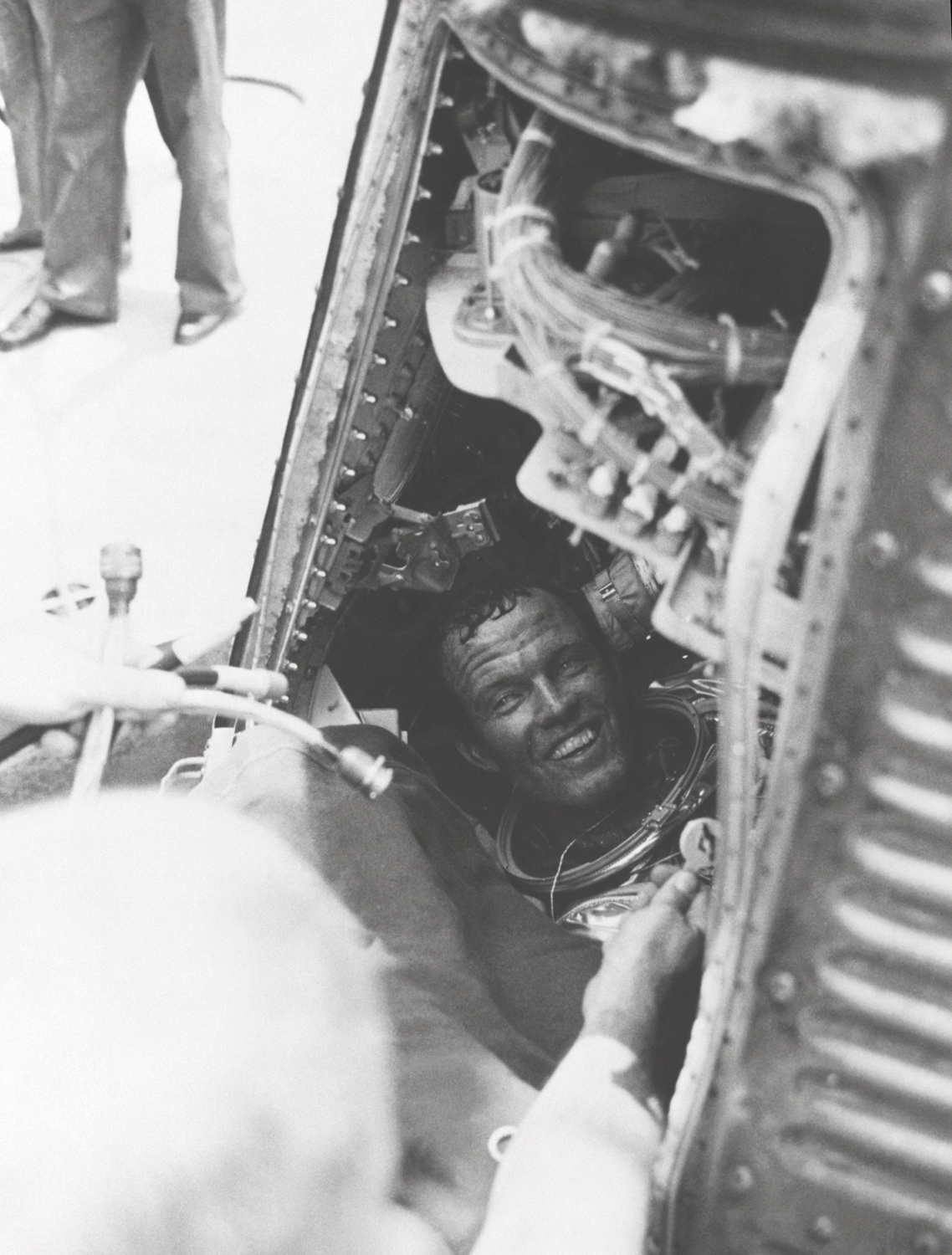
As for Walt Williams, the disgruntled Project Mercury operations director, who had tried to have Cooper removed from Faith 7, it was a case of having been proven wrong. When the pair met at Cape Canaveral, Williams warmly shook Cooper’s hand.
“Gordo,” he said, “you were the right man for the mission!”




